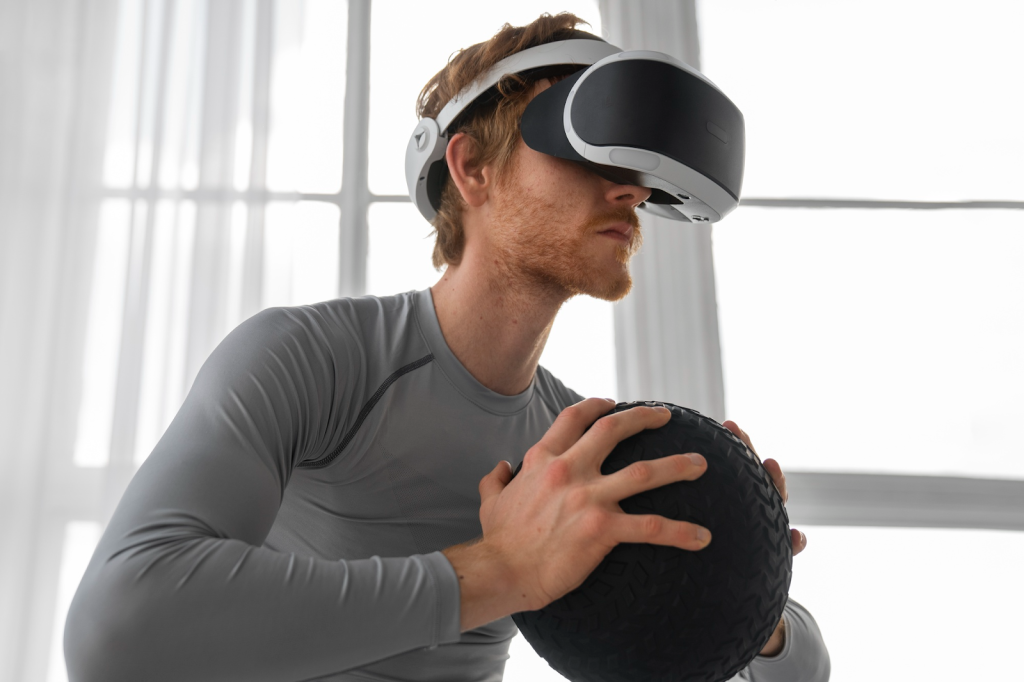If you’ve followed basketball over the past few years, you’ve probably noticed something unusual happening around gyms and training centers. Players aren’t just working out with cones and shooting guns anymore – they’re wearing headsets, reacting to holograms, tracking motion in real time, and rehearsing situations that look like they came from the future. And sometimes, while scrolling through the endless mix of sports clips, tech demos, and random digital links – the kind that even include things like crazy time apps tucked between highlight videos – it becomes obvious just how fast training technology is evolving.
Mixed-reality isn’t a distant experiment anymore. It’s starting to reshape the way players learn the game.

Why mixed-reality training feels so different
Traditional drills are great for mechanics, but they rarely recreate the speed and unpredictability of live basketball. Mixed-reality (MR) bridges that gap by blending real physical movement with virtual layers of information – defenders that react, cues that flash in real time, or decision moments that force players to think fast.
At its best, MR training gives players something no old-school drill can: rep after rep of game-like pressure without waiting for five teammates to show up.
1. Decision-making at full speed
Instead of imagined defenders, players face virtual ones that adjust based on their movement. A drive triggers help. A hesitation triggers a switch. The brain gets sharper because it’s constantly processing new patterns – the same way it would in a real game.
2. Repetition without wearing down the body
You can practice defensive rotations, passing reads, off-ball timing, and spacing without pounding your knees for hours. That’s a huge win for developing players and maintaining veteran athletes.
The science behind MR development
Mixed-reality taps into fields like motor learning and visual cognition. According to research on how the brain coordinates movement (you can find foundational explanations on Wikipedia’s motor learning entry), athletes improve fastest when feedback is clear, environments are varied, and decisions must happen quickly.
MR checks all those boxes:
- It changes scenarios automatically.
- It introduces unpredictable stimuli.
- It reinforces correct actions in real time.
Table: What mixed-reality adds to basketball training
| Training Element | What MR Provides | Why It Matters |
| Spatial awareness | Virtual defenders, floor markers, live reactions | Helps players read spacing like pros |
| Cognitive processing | Fast cues and decision chains | Builds quicker instincts under pressure |
| Skill repetition | Endless situational reps | More learning with less physical strain |
| Feedback + analytics | Tracking arc, timing, reaction speed | Speeds up improvement and correction |
| Creativity + experimentation | Safe space to try new moves | Fosters confidence and problem-solving |
How players actually use MR in training
Simulated defenders for finishing practice
Players attack the rim while virtual shot-blockers adjust to their every move. Instead of guessing where a contest might come from, they learn to feel it.
Reading complex defensive coverages
High-level guards rehearse blitzes, ICE coverage, switches, and weak-side rotations. The system throws new reads at them until their reactions become instinctive.
Shooting under pressure
Lights, sounds, or virtual closeouts create realistic distractions so shooters can practice staying calm. It trains the mind as much as the mechanics.
Why teams and trainers are embracing it
Mixed-reality isn’t replacing traditional training – it’s enhancing it. Teams love it because:
- players can train game situations without needing full scrimmages
- individual work becomes more holistic
- development becomes measurable, not just intuitive
According to multiple reports on training innovation (Forbes has covered similar shifts in athlete tech), organizations want tools that speed up learning without increasing risk. MR fits that perfectly.
Challenges still exist – but progress is fast
Like any new technology, there are hurdles:
- Not all gyms can afford high-end systems.
- Some players feel awkward wearing headsets at first.
- Coaches need time to adapt old drills to new tools.
But once players feel the difference – sharper reads, better rhythm, more confidence – the benefits usually win out.
What the future of basketball development might look like
If current trends continue, MR will become as normal as shooting machines or wearable sensors.
Imagine:
- rookies practicing defensive coverages before their first real NBA practice
- young players learning timing cues months faster
- overseas prospects training with MR systems that mirror their future team’s playbook
- veterans using MR for low-impact film sessions that feel like walkthroughs
The sport is getting faster, smarter, and more adaptable – and mixed-reality aligns perfectly with that direction.
In the end
Mixed-reality training isn’t about replacing the fundamentals that built the game. It’s about giving players a new way to feel the sport – to sharpen instincts, expand creativity, and speed up the learning curve. Whether it’s a teenager trying to break bad habits or a seasoned pro adding a new wrinkle to their game, MR offers a kind of practice that simply didn’t exist a decade ago.
Basketball keeps evolving, but one thing stays true: players grow fastest when training feels real.

